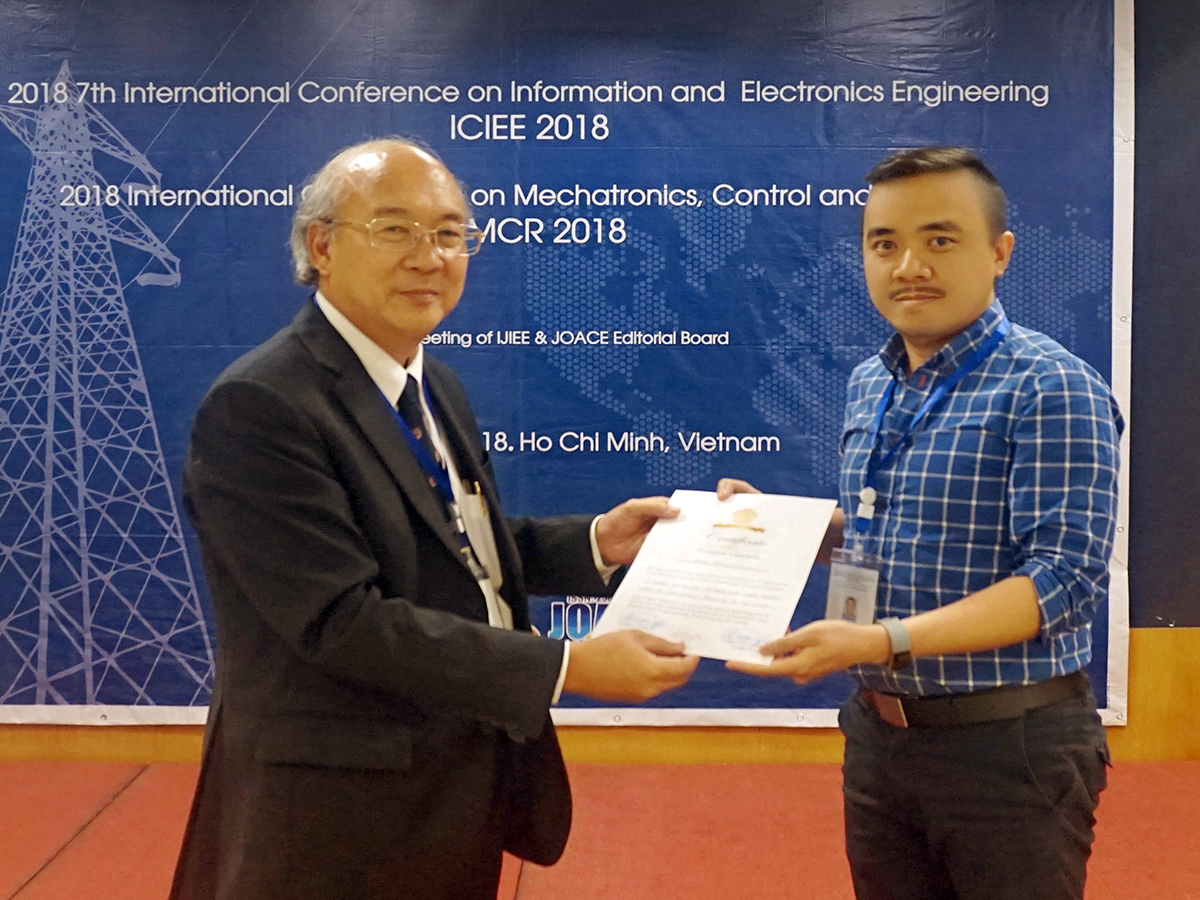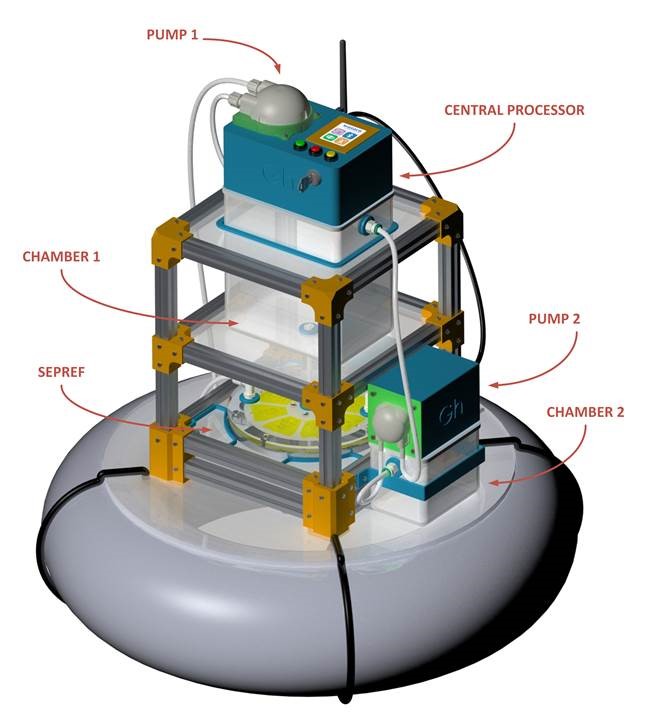Best presentation award on sea lice detection

Nhut Tran in CtrlAQUA was awarded best presentation at conference about electronics engineering in Vietnam.
His presentation was about early detection of attacks by sea lice, more precisely “A secure end-to-end IoT-based water sample collection system for early warning of attacks by sea lice larvae”. The conference where he presented was the 7th International Conference on Information and Electronics Engineering (ICIEE 2018), which took place in February in Ho Chi Minh City, Vietnam.
Tran is now working in Oslofjord Ressurspark AS, but his presentation is based on the research he did as a postdoc in 2016-17 under Nofima’s affiliation and the University of Bergen.
About the detection system for sea lice attack
Fish growing in a farm, either in a closed containment system or a traditional net cage plant will always be more intense than a natural ecological habitat situation. Fish farmers will strive to make the condensed environment as good as possible. Even though the salmon genotype used in modern Norwegian Aquaculture is much more adapted to fish farm conditions, good household and monitoring of critical parameters are crucial.
Negative and unwanted stress and diseases causing reduced growth and increased mortality normally come from outside as biotic and abiotic environmental changes. Sea lice, toxic algae, jellyfish, etc. Only a limited number of micro parasites or other biotic stress factors can be controlled by vaccines, chemical treatments or antibiotics. An earlier detection of stress and disease is clearly needed. This will require a change in management from disease-monitoring to pathogen tracing. To see your biological enemies before they attack, in many cases means taking representative samples from the surrounding water and identify the factors even before they course unwanted effects.

The automated Water Sample Collection system (WASACO) is a tool for sampling particles from the surrounding seawater in a representative way for later pathogen tracing. Concentrating particles from a large and representative volume of seawater, concentrating identified particles down to a very small volume. The massive advantage for the WASACO compared with a normal filtration device is a design that is not clogging. In addition, the option of adding fresh water to the process and reduce the salinity in a sea water samples to a neglectable level.

